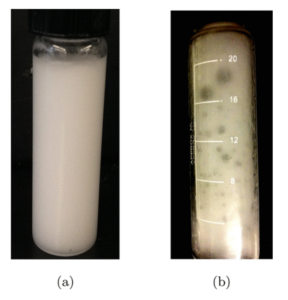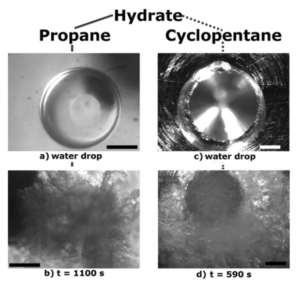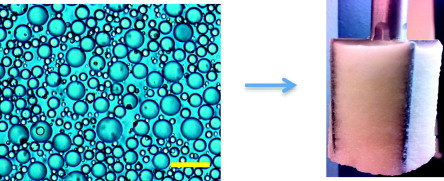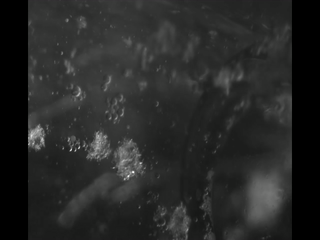Introduction
Clathrate hydrates are ice-like compounds made up of crystalline cages of water molecules surrounding a guest species, including noble gases, low molecular weight gases, and small organic molecules. Hydrate particles form at low temperatures and high pressures and can cause risks to flow assurance of oil and gas pipelines by forming aggregates together. Thermodynamic inhibitors have been used in industry to reduce the hydrates’ effects but are costly to remove and may interfere with production policies. An alternate means of maintaining flow assurance can be achieved with low dosage inhibitors such as anti-agglomerates, which allow hydrates to form but not form aggregates. Along with prevention, it is key to be able to predict the behavior of gas hydrates.

Figure 1. Images of vials containing 20 vol % water-in-oil emulsions with 0.1 vol % Span 80 and with 2.5 wt % particles (a) after preparation at t = 0 and (b) emulsion collected after 100 min of shearing at T = 15 °C and γ̇ = 100 s–1. (Ahuja 2018)

Figure 2. Morphology evolution of single water drop in oil containing (a,b) propane and (c,d) cyclopentane. Scale bar = 300 μm. (Zylyftari 2015).
Our Research
The Camargo and Palermo model offers a means to predict the viscosity of hydrate slurry by analyzing the balance between shear and attractive forces on the hydrate particles along with the effective volume fraction of the hydrate aggregates. There is evidence that the forces of attraction are based on capillary bridges between the particles, as peak final viscosity does not occur at full water conversion.

Figure 3: Photomicrograph of 30% water-in-oil emulsion and end product for the CP hydrate-forming emulsion deposited on the vane rotor. The scale bar is 40 μm. (Ahuja 2015)

Figure 4: Water-in-oil emulsion undergoing hydrate formation. (Ahuja 2015)
References:
- Rheology of hydrate-forming emulsions stabilized by surfactant and hydrophobic silica nanoparticlesA Ahuja, A Iqbal, M Iqbal, JW Lee, JF MorrisEnergy & fuels 32 (5), 5877-5884. 2018
- Modeling oilfield emulsions: comparison of cyclopentane hydrate and iceG Zylyftari, A Ahuja, JF MorrisEnergy & Fuels 29 (10), 6286-6295. 2015
- Yield stress measurements of cyclopentane hydrate slurryA Ahuja, G Zylyftari, JF MorrisJournal of Non-Newtonian Fluid Mechanics 2015 220, 116-125. 2015
